A well-liked and creative way to add natural light to interior areas is a solar tube lighting system. Solar tubes offer many advantages including energy efficiency, improved mood, ventilation system, fresh air, and less dependency on electric light by catching sunlight on the roof and directing it through reflecting tubes.
Installing Solar tube lighting systems or tubular skylights does, however, have several disadvantages that should be carefully examined.
Making an informed judgment regarding whether solar tube lighting is the best option for your lighting needs requires an understanding of these drawbacks. In this guide, we will cover the drawbacks to solar tube illumination, highlighting any potential restrictions and things to think about.
People can balance the benefits and downsides of solar tube lighting and decide whether it suits their unique needs and preferences by considering these drawbacks. I hope this guide will be interesting and informative for you to read.
What are the drawbacks to solar tube lighting?
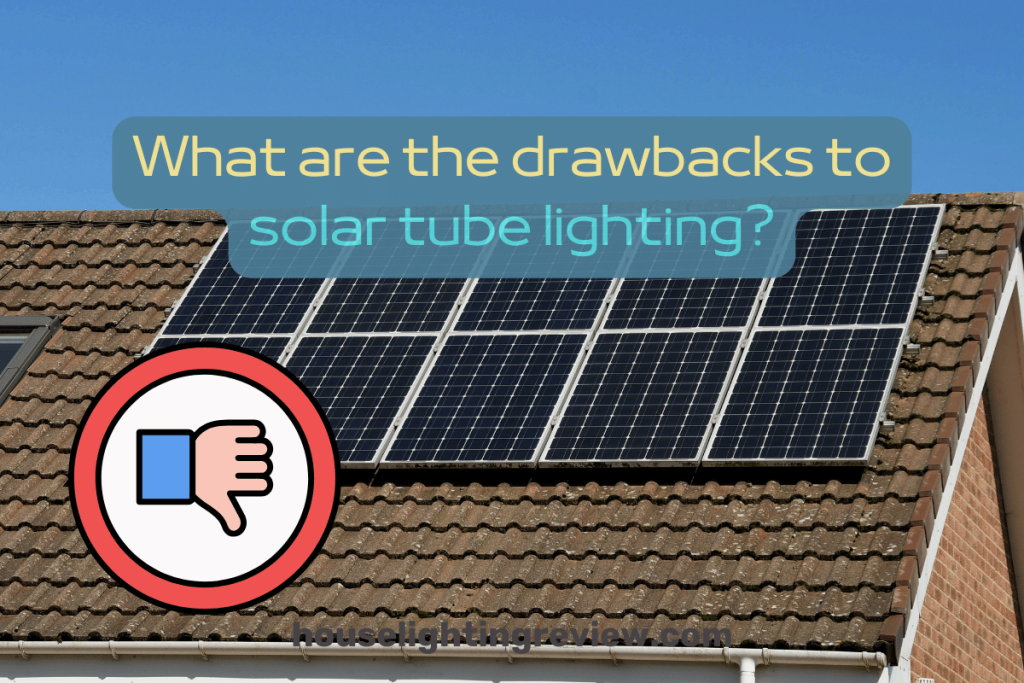
Despite its many benefits, solar tube lighting does have some disadvantages that need to be taken into account.
These shortcomings are the answer on what are the drawbacks to solar tube lighting :
Sunshine requirement
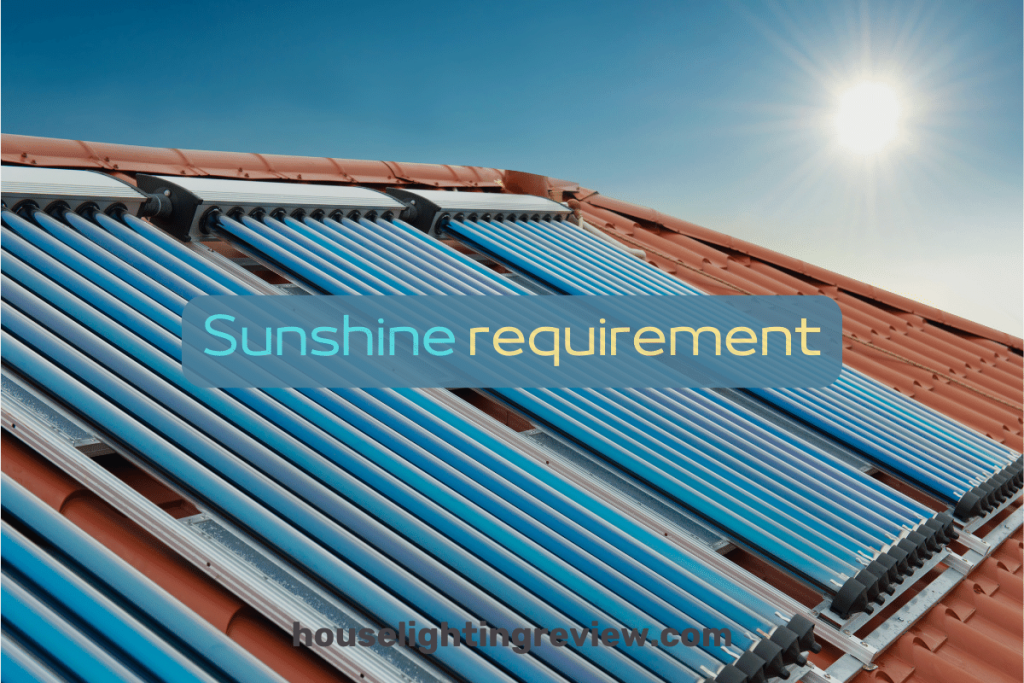
Solar tube lighting depends on sunshine to give illumination. As a result, its efficacy may be diminished on cloudy or overcast days, at night, or in locations with little solar light. The weather can affect the lighting’s consistency and intensity by altering the quantity and quality of light that passes through most solar tubes.
Installation difficulty of solar light tubes

Skill and accuracy are necessary for the proper installation of solar tube lighting or light pipes. Inadequate installation might result in problems like leaks, poor performance, or weakened structural integrity of the roof.
To secure the best outcomes, it is essential to collaborate with seasoned experts who are familiar with the unique requirements of solar tube lights installation.
Limited nighttime use of lighting control
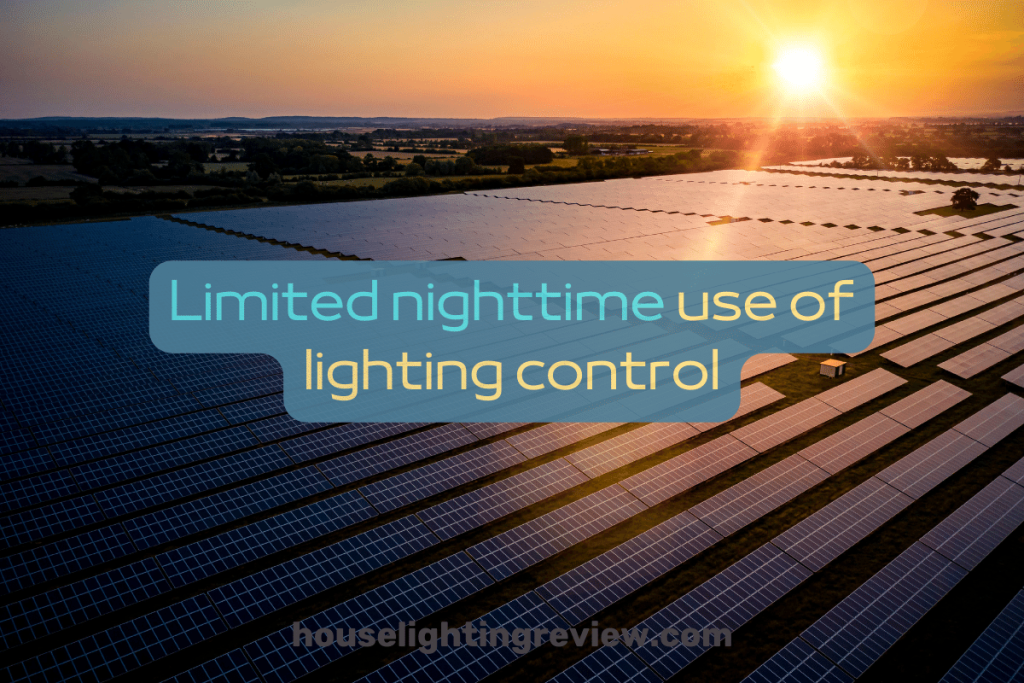
Because solar light tubes are made to capture natural light, solar tube lights cannot be used as lights at night. After sunset, more artificial lighting is required for proper illumination.
This means that relying solely on solar tube lighting may not be adequate for ongoing lighting requirements, especially in areas that need to be lit at night.
Initial cost consideration of solar tube lights
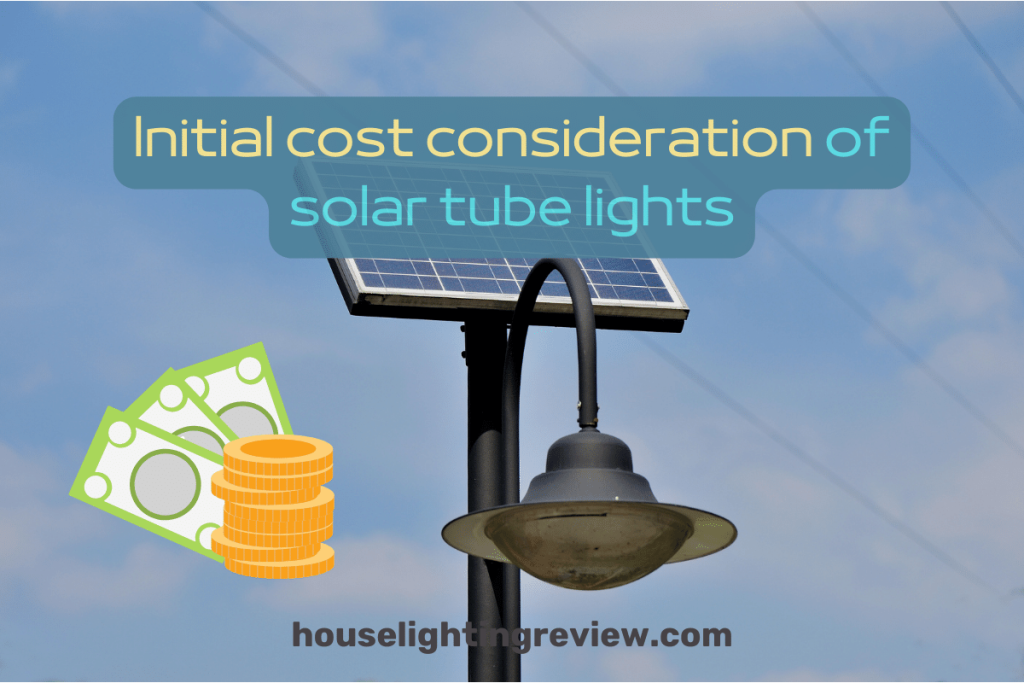
Solar lighting can result in long-term energy source savings, although the upfront installation costs may be higher than those of conventional lighting choices. The price may cover the solar tube system’s purchase, expert installation expenses, and any necessary changes to the roof’s framework.
In addition, the majority of DIY solar tube kits are made for roofs with asphalt or wood shingles. You will want an adaptor if your roof is made of tiles or metal.
However, it’s crucial to take into account the possible energy source savings and long-term advantages that solar tube lighting provides.
Cleaning and maintenance

To achieve peak performance, sun tunnels need to undergo routine maintenance. To improve light transmission, this also entails cleaning the dome on the roof of any dirt and debris that may have accumulated over time.
To maintain optimal effectiveness, the reflecting surfaces inside the tubes might also need to be cleaned or replaced on occasion.
Design restrictions
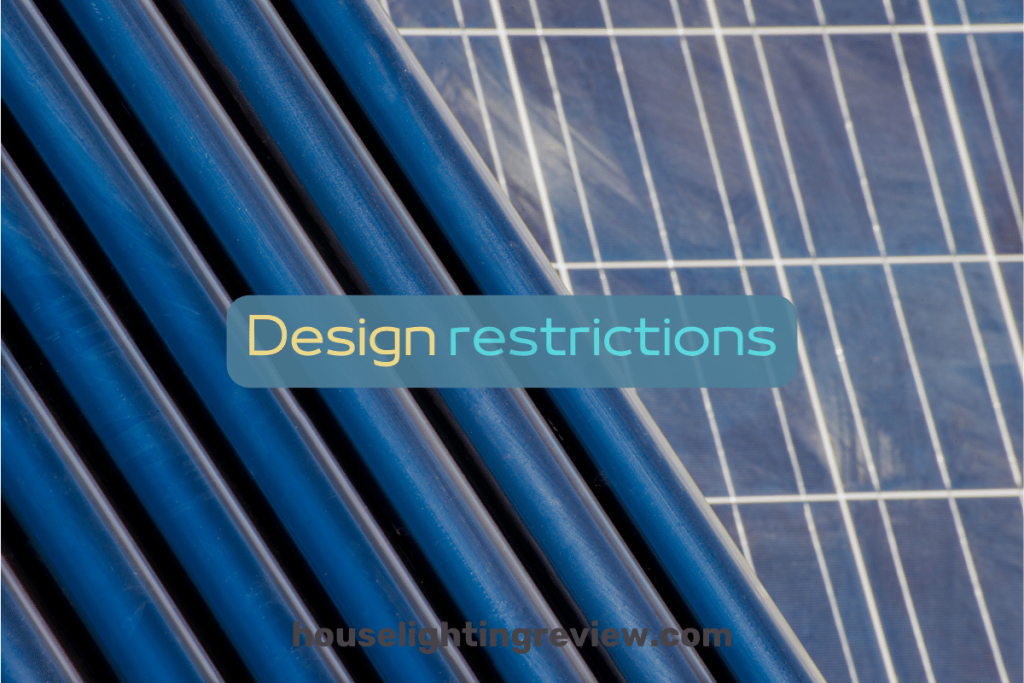
It is important to take into account any potential design restrictions for solar lighting. For instance, the building’s design or the amount of sunshine that can reach the tubes on the roof may be a limitation. This may affect how well the system works to give light to particular rooms or locations.
FAQ
Do solar tubes cause roof leaks?
Sunlight from the roof is collected via sun tunnels, often referred to as sun tunnels or skylights, and directed through a reflecting tube into the required region to provide natural light in interior spaces. Solar tubes shouldn’t cause the roof leak if they are placed correctly.
However, there are some elements that, of solar tube installations, may cause roof leaks:
Poor installation
If the solar tube installation is done incorrectly, for example, by using incorrect flashing or sealing around the tube penetration on the roof, it could result in water infiltration and roof leaks.
Roof damage
In some instances, the structure of the roof may need to be cut or modified to install solar tubes or traditional skylights. It can lead to weak spots that could lead to leaks if done carelessly or if the roof is already weakened.
Age and wear
Over time, weather exposure, aging, or inadequate maintenance can cause the seals and flashing around the solar tube to degrade. This can result in roof leaks and water infiltration.
It is essential to ensure competent installation by professionals who are educated about suitable flashing procedures and waterproofing to reduce the danger of roof leaks related to tubular skylights or traditional skylights.
Regular upkeep and examinations of the solar tube system, which include looking for any indications of water damage or degradation, can also aid in identifying prospective problems and resolving them before they develop into leaks.
Do solar tubes work on cloudy days?
Solar tubes are made to collect sunlight from the outside and direct it into inside areas to provide illumination during the day. Solar tubes can still produce some light on overcast days, though they are most efficient on sunny days with lots of sunlight.
In comparison to days with direct sunlight, solar tubes may transmit less light on cloudy days. The solar tube system’s particular design and specs, as well as the cloud cover density, will determine the brightness and light level.
Solar tubes may nevertheless produce a sizable amount of natural light, frequently more than conventional artificial lighting sources, even on dark or overcast days.
The positioning and direction of the tubes about the available light affect how well they work on foggy days. Solar tubes may perform less efficiently if they are installed in locations with persistent cloud cover or in structures that provide shade.
It’s important to remember that solar tubes don’t only rely on direct sunshine, even though they can improve natural light in inside places. Even under less-than-ideal lighting situations, such as gloomy or overcast skies, they are built to capture and transmit light.
To make sure that the system is appropriately sized and constructed to fulfill your lighting needs, it is advised that you speak with a professional or supplier if you live in an area where there are a lot of overcast days.
How long do solar tubes last?
Several variables, such as the caliber of the materials used, the technique of installation, and the particular brand or manufacturer, might affect the longevity of solar tubes. A well-installed and well-maintained solar tube system, however, can normally last for 20 to 25 years or longer.
What are the variables that can affect how long solar tubes last?
Materials. Solar tubes with high-quality materials typically last longer. Examples of such materials are UV-protected reflective tubing and domes constructed of impact-resistant acrylic or polycarbonate.
Installation. For solar tubes to last a long time, installation must be done correctly. It is guaranteed that the lighting system is securely mounted, the roof penetration is properly sealed, and the flashing is correctly placed during a professional installation by knowledgeable professionals who adhere to product requirements and industry best practices.
Maintenance. The lifespan of solar tubes can be increased with routine maintenance. This entails routinely cleaning the dome and reflective tubing to get rid of grime, junk, and any other potential obstacles that can lessen the light transmission.
The lifespan of the system can also be increased by regularly checking the interior diffusers, flashing, and seals for wear and corrosion and fixing any problems as soon as they arise.
Environmental factors. Solar tubes’ longevity may be impacted by environmental factors such as exposure to abrasive weather, severe temperatures, or strong UV radiation. A longer lifespan can be achieved by selecting a reliable brand whose product design considers these variables.
It’s important to remember that even though solar tubes have a lengthy lifespan, the lighting system performance could eventually deteriorate.
A buildup of dust or deterioration of the reflective coatings might reduce the amount of light that passes through the light tubes. The best performance may be maintained with routine upkeep and cleaning.
Do solar tubes need maintenance?
Yes, frequent maintenance is necessary to maintain the longevity and best performance of solar tubes.
Here are a few upkeep activities for solar tubes to think about:
Cleaning the dome. As the dome on the roof accumulates dirt, dust, and other debris over time, the amount of light that enters the tube may be diminished.
A soft cloth or sponge regularly used to clean the dome might help to retain optimal light transmission. Avoid using aggressive cleaning products or chemicals that could scratch the dome’s surface.
Getting rid of blockages. Inspect the inside diffuser and the tube’s termination inside your house or structure. Make sure there are no objects that could block or reduce the light output, such as dust, cobwebs, or debris. If required, gently clean these areas.
Inspecting seals and flashing. Seals and flashing should be periodically inspected because they are located around the solar tube on the roof.
Look for any indications of deterioration, cracking, or damage. To avoid water infiltration and potential leaks, it’s critical to remedy any problems right away, such as weakened flashing or loosened seals.
Addressing leaks. It’s important to look into and locate the cause of any leaks you notice if you notice any indications of water leaking near the solar light tube, such as water stains or moisture damage. If necessary, get professional advice to handle the problem and guarantee proper waterproofing and sealing.
Examining reflective coatings. The reflective coatings inside the tube may deteriorate or lose their effectiveness over time.
You can ensure that your solar tube system continues to offer the best possible natural lighting and lengthen its longevity by adhering to these maintenance procedures. It’s crucial to review the exact maintenance instructions the manufacturer has provided for the model of solar tube light you have.
Conclusion
Numerous advantages come with solar lighting as a green and economical natural lighting option. But it’s important to take into account the shortcomings and constraints of this technology.
The dependence on sunlight, potential installation difficulties, restricted use at night, and initial cost considerations are some of these limitations.
Solar tube lighting is nevertheless a practical solution for people looking to have more natural light, decrease electricity bills, and bring natural light to create a more sustainable living or working environment despite these disadvantages.


